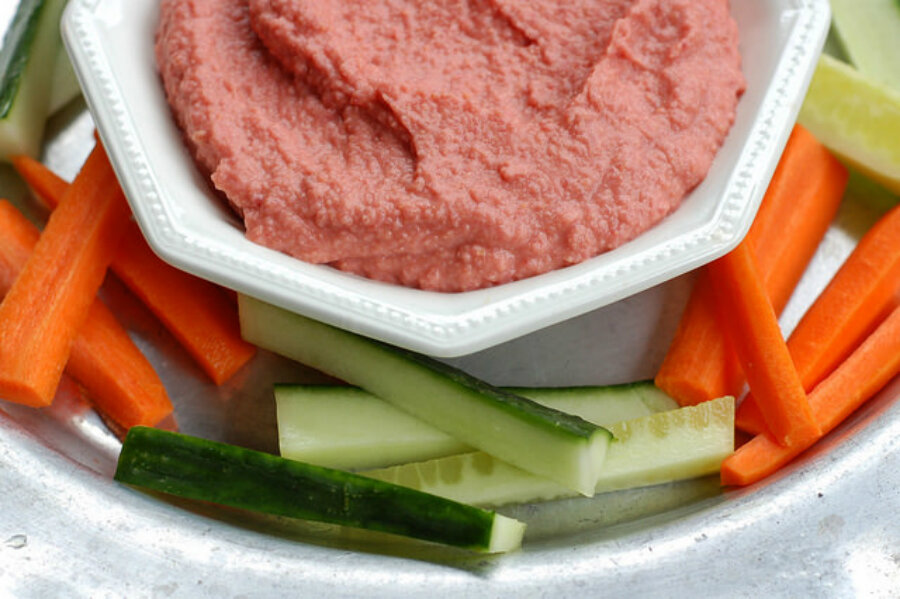Roasted beet humus
Loading...
This hummus has got a lot going for it from its pretty color to the way the lemon and garlic provide a perfect foil for the sweet, earthy flavor of the roasted beets and the nuttiness of the chickpeas to the added folate, vitamin C, fiber, manganese and potassium the beets add to the protein-packed hummus.
Add some cut up veggies and a pita and you have a hearty, filling, super healthy meal. Or make this hummus as part of a mezze-style spread and invite friends over for dinner.
I got the idea from some store-bought roasted beet hummus that I tried at a friend's house. I had to be practically pulled away from the hors d'oeuvres table, cracker still in hand, happily spoiling the lovely meal she had prepared for us.
It's easy to make, too, especially if you happen to have a roasted beet lying around. Sadly, I did not have any roasted beets in the fridge so I went out and bought some since the ones in our garden are not ready to harvest just yet. Then I roasted 'em but good, slipped the skins off, cut them up and tossed them into the Cuisinart with a bunch of garlic.
I've also become a bit of a chickpea snob so I soaked a couple cups of dried garbanzos over night (so I would have enough leftover beans to freeze – makes it so easy later on) and made the hummus after cooking the beans the next day. But there is NO SHAME IN USING A CAN OF CHICKPEAS. Just make sure to get the kind in the BPA-free cans if you go that route.
The cooked chickpeas joined the beets and garlic in the Cuisinart along with some tahini paste, salt and lemon juice. A little blitzing and this lovely, smooth, salmon-colored hummus was ready to eat.
The recipe below is flexible so you should feel free to adapt it to your liking – if you love garlic, add more. If you like the beet flavor, add more. If tahini is your thing, go crazy. It's just hummus, we're not baking anything.
Roasted Beet Hummus
Serves 4-6
Ingredients
1 large or 2 small beets, scrubbed with greens and tops removed
1-3/4 cups cooked chickpeas or 1 15 oz can, mostly drained
Juice of 1 large lemon
2 large cloves garlic, pressed
2-3 tablespoons tahini paste
1/4 cup extra virgin olive oil
Sea salt and freshly ground black pepper to taste
Directions
1. Begin by roasting the beets. Preheat the oven to 450 degrees F. Place the scrubbed, trimmed beets in a generous pouch of tinfoil, drizzle them with olive oil and fold the foil over them to form a neat, enclosed little package. Place the package on a baking sheet (preferably one you do not care overmuch about as it may end up getting some charred beet juice baked on to it), place it on the rack and bake for roughly 60 minutes, until the beets are tender when poked with a fork. When they're done, remove them from the oven and allow them to cool, then slip the skins off with your fingers or a knife and slice them into quarters.
2. Place the beets in the bowl of the food processor and add all the remaining ingredients except the olive oil. Blend until smooth, drizzling the olive oil in as you go.
3. Taste and adjust the seasonings as needed adding more lemon juice, salt, tahini or garlic according to your likes. If it feels too thick, add a bit more oil and a little water and blend until fully combined. Store in an airtight container in the fridge for up to a week.
Related post on The Garden of Eating: Spicy Sweet Moroccan-Inspired Chickpea Spread with Blood Orange & Chipotles








